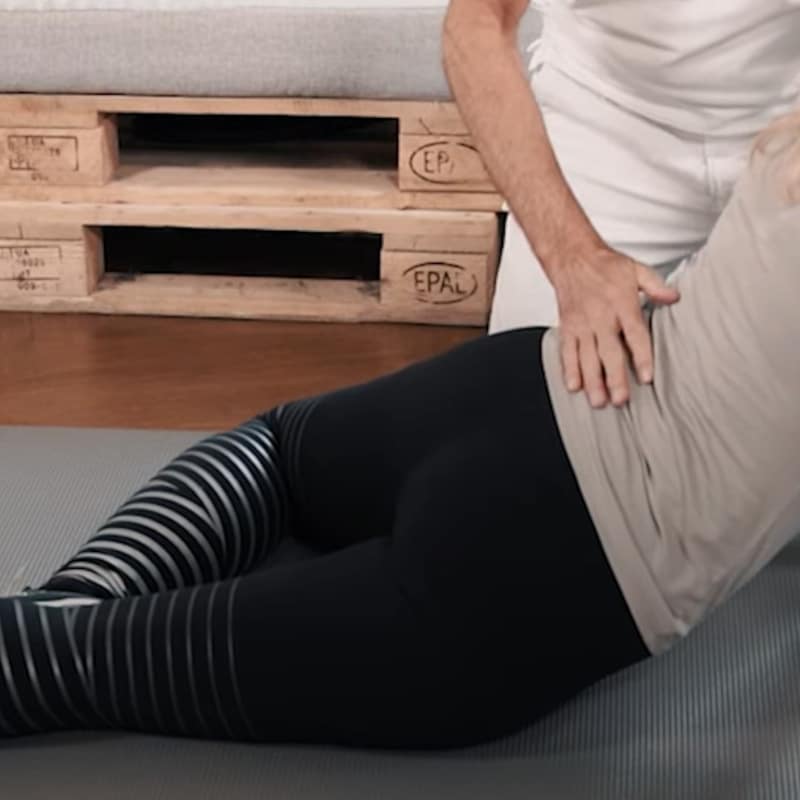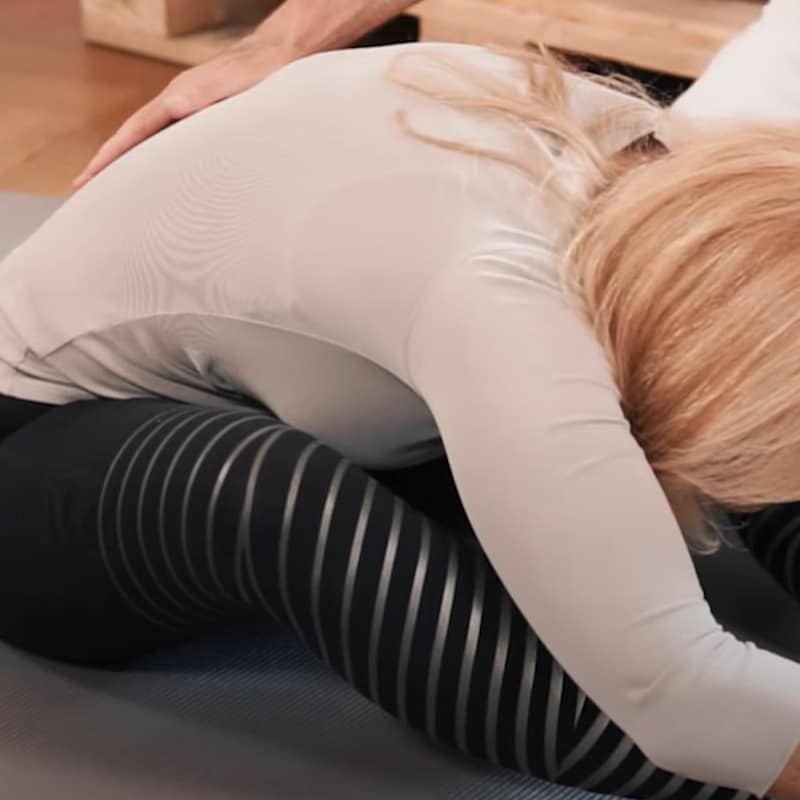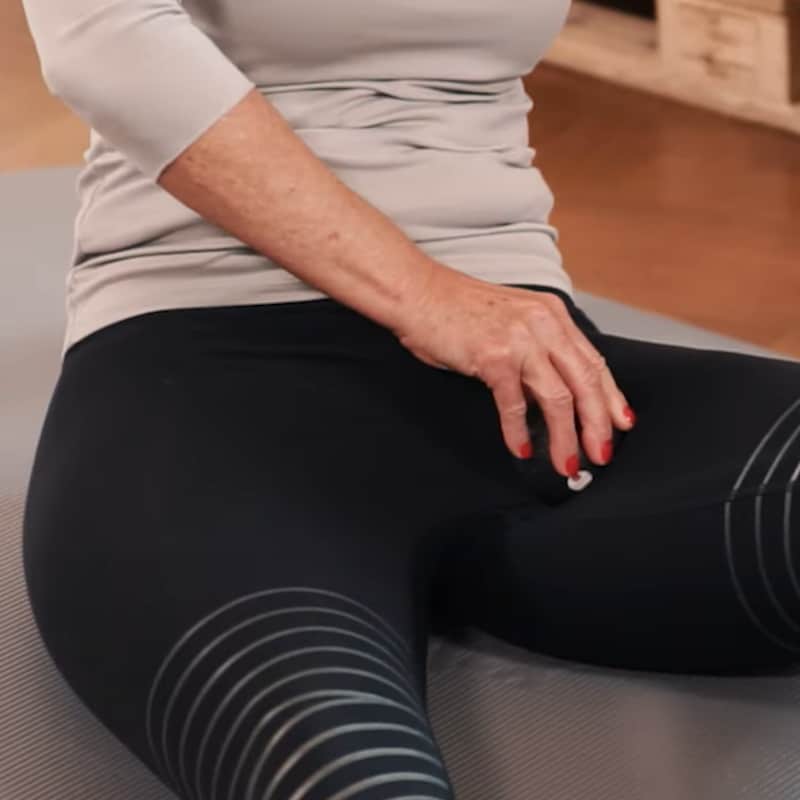hyperlordosis exercises
Body Part:
Lower Back
Equipment:
Mini Massage Ball
Level:
Beginner
Body Part:
Lower Back
Equipment:
Mini Massage Ball
Level:
Beginner
Hyperlordosis is an exaggerated curve of the lumbar spine, which is the area of your spine in your lower back. The condition is also known as hollow back, swayback, and sometimes saddleback. If you have hyperlordosis, your hips and pelvis may tilt forward, and your buttocks might stick out, giving you the appearance of leaning back when standing up straight. You may have pain and numbness in the lower back. We’ve developed a hyperlordosis exercise program that may relieve your discomfort. If tight muscles and fascia are the cause of your hyperlordosis, our exercises might help correct your posture. All you need for our routine is our Mini Massage Ball. If you don’t have our tool, use a tennis ball. Jump to our exercises or keep reading to learn more about hyperlordosis.
Hyperlordosis is a condition of the lumbar spine. Our spine is divided into three regions:
Lordosis is the medical term that describes the forward curve of your cervical and lumbar spine. A certain amount of lordosis is normal; it keeps your spine in proper alignment, gives it strength and flexibility, and absorbs shock when you move. If your lumbar spine curves too far inward, this is known as hyperlordosis, swayback, or hollow back.
Hyperlordosis causes the hips and pelvis to tilt forward when you’re standing, shaping your lower back like a C. Your stomach protrudes, and your butt sticks out.
Hyperlordosis can be caused by:
Poor Posture. Sitting slumped over forces your lower back muscles to overcompensate; the muscles tighten to pull your spine back into alignment. Tight lower back muscles pull at your lumbar spine, increasing the natural curve.
A Sedentary Lifestyle. Not moving enough can cause the glutes, abdominals, and hamstrings — the muscles surrounding your spine that provide support — to weaken. Weak muscles can lead to hyperlordosis.
Obesity. Excessive fat on the belly and buttocks put pressure on the lumbar spine, which can increase lumbar lordosis.
A Spinal Injury. An injury to the spine (because of sports or a car accident) may cause hyperlordosis.
Pregnancy. Being pregnant may increase your chances of developing hyperlordosis.
Certain medical conditions may cause hyperlordosis. These conditions include:
Spondylolisthesis. This condition occurs when a vertebra slides forward onto the vertebra below it. Spondylolisthesis can happen anywhere along your spine, but it’s most common in the lumbar spine.
Kyphosis. Also known as roundback or hunchback, kyphosis is an excessive upper back curve.
Osteoporosis. Osteoporosis weakens the bones, leaving them vulnerable to breaks.
Muscular Dystrophy. Muscular dystrophies (MD) are a group of over 30 genetic diseases that weaken the muscles.
Hip Dysplasia. Your hips are ball-and-socket joints. Hip dysplasia is when the ball (femoral head) and socket (acetabulum) don’t fit together correctly. Most cases of hip dysplasia are present from birth.
Discitis. Discitis is a rare and severe condition that occurs when the spine’s intervertebral discs become infected.
Some cases of hyperlordosis cause only visual symptoms. These symptoms include:
Additional symptoms are:
A severe case of hyperlordosis may lead to bladder control issues.
Visit our online shop to get the tools you need for our exercises. While you’re there, take a look around. We’ve got lots of pain-relieving tools and products waiting to be added to your cart.
Take me to the shop.To maximize the benefits of our routine, exercise intensely and intelligently. Challenge yourself to perform our stretches and foam roll massage at a high intensity that may produce an uncomfortable sensation. (This is a sign that the exercises are working.) However, do not stretch or massage to the point that your breaths become short and shallow or you find that you’re holding your breath or clenching your teeth.



For this massage, you’ll need our Mini Massage Ball or a tennis ball.
Try our Lordosis Exercises 6 days a week for a 3-week sprint and track your progress.
Our tip: Don’t be a slouch. Since we spend so much time sitting, do your spine a favour and be mindful of good posture. Whether you’re in the conference room or on the couch, keep your back straight and your shoulders back. Your spine deserves it.
Our Encyclopedia Article includes all you need to know about the lumbar spine, and causes and symptoms of lower back pain. Includes more pain-relieving exercises.
Become a Lower Back Pain ExpertSpondylolisthesis occurs when a vertebra slides forward onto the vertebra below it. This routine can help ease lower back pain the condition causes.
Help Spondylolisthesis Pain NowGravity is partly responsible for our poor posture. This 4-minute posture correction exercise shows you how to team up with gravity to develop a healthy habit.
Get Healthier Posture Now